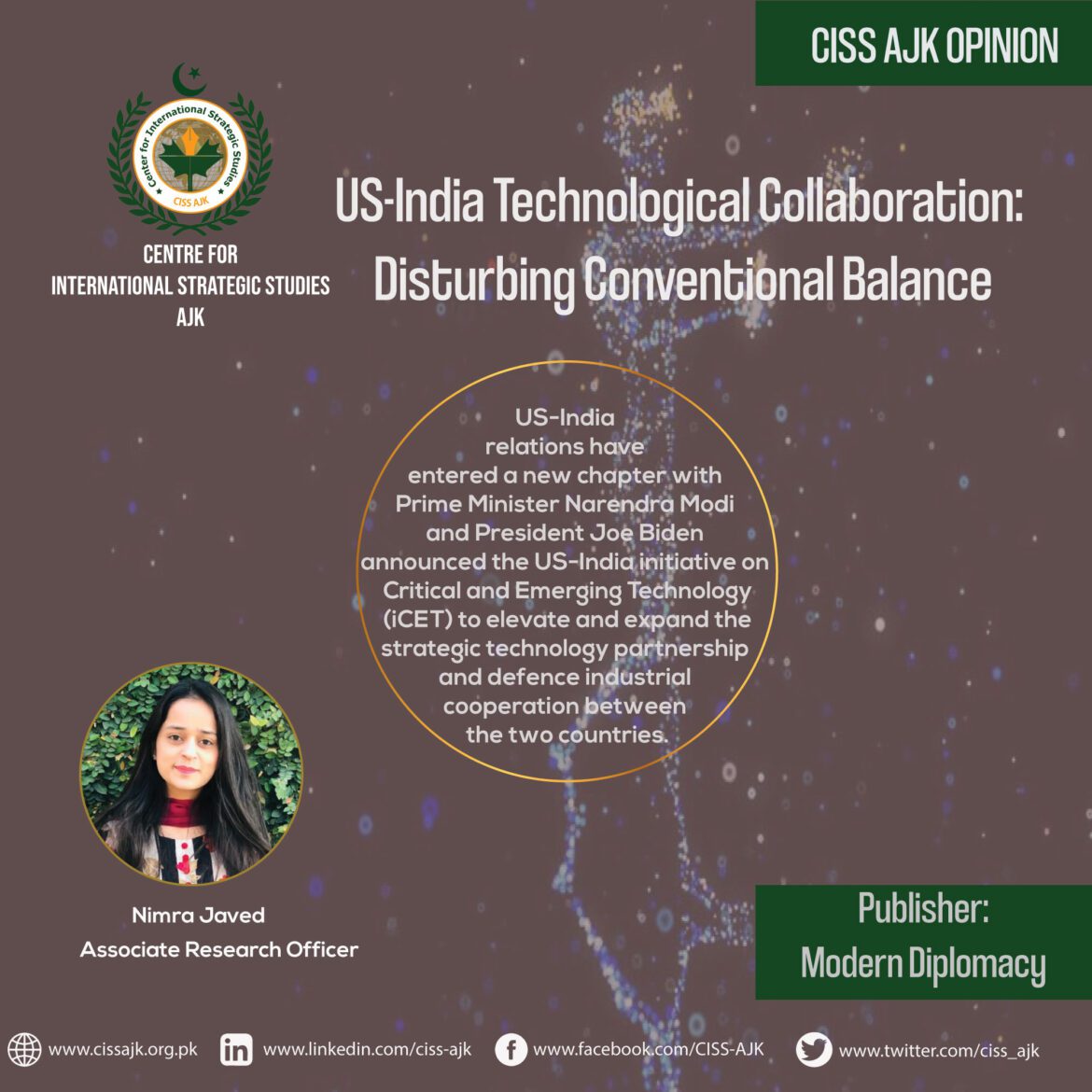794
To become a world leader in technology, India must increase its ability to innovate in the sector and climb the value chain in both software and hardware. This calls for a more robust partnership with the United States throughout all spheres of society, not just government. The current climate in both nations points to the need for deeper technological cooperation.
US-India relations have entered a new chapter with Prime Minister Narendra Modi and President Joe Biden announced the US-India initiative on Critical and Emerging Technology (iCET) to elevate and expand the strategic technology partnership and defence industrial cooperation between the two countries.
The two leaders emphasized the importance of collaboration in areas such as semiconductors, critical minerals, space, and defense cooperation, highlighting the benefits of diversified and resilient supply chains. The strengthening defense partnership includes agreements on military cooperation, such as the production of General Electric F-414 jet engines in India and the repair of U.S. Navy ships in Indian shipyards.
US and India launched new bilateral initiatives such as research agency partnerships, quantum coordination, democratic-aligned AI standards, high-performance computing, defense industry ties, resilient semiconductor supply chains, and space collaborations. Additionally, efforts are being made to foster research and university partnerships, enhance telecommunications regulations, advance research and development in 5G and 6G, and promote the adoption of Open RAN in India.
The U.S. aims to diversify its supply chains away from China through its “friend-shoring” strategy, and India presents a valuable opportunity for collaboration and technology sharing. The U.S. is increasingly willing to share critical technologies to help India develop its own defense manufacturing capabilities. The U.S. recognizes the importance of India’s human tech capital in global innovation and has been further encouraged by Modi’s state visit to attract U.S. investments in critical technology areas. This cooperation is also a result of Chinese advances in technology.
As a result of government initiatives, China has taken a “stunning lead in high-impact research.” One-third of the world’s research goes into synthetic biology, and the country is also a frontrunner in other areas including electric batteries, 5G, and nano manufacturing.
Most of the 44 technologies studied, which included defense, space, robotics, energy, the environment, biotechnology, artificial intelligence (AI), advanced materials, and quantum technology, placed the Chinese Academy of Sciences in either first or second place. The US is helping India to counter China.
While the U.S. and India are not formal allies, their relationship is characterized as one of equal partners and mutual strategic interests. The Biden administration has placed a significant emphasis on the strategic and economic ties between the two nations, independent of India’s future support for the United States.At the United Nations, the G-20, the ASEAN Regional Forum, the International Monetary Fund, the World Bank, and the World Trade Organization, among others, India and the United States work closely together. The United States is in favor of a revamped United Nations Security Council that includes India as a permanent member, and it was pleased when India was elected to serve a two-year term on the council beginning in 2021.
India participates as a discussion partner in the Association of Southeast Asian Nations, as a partner in the Organization for Economic Cooperation and Development, and as an observer in the OAS. The United States and India meet as part of the Quad with Australia and Japan to further the cause of free and open trade in the Indo-Pacific. Australia, India, Japan, and the United States will each send 25 students to the United States to earn a master’s or doctorate in a STEM field, and the recruiting process for the inaugural Quad Fellows will end in June 2022.
The United States and eleven other countries have formed the Indo-Pacific Economic Framework for Prosperity (IPEF) to improve trade and investment in the region. India is one of these partners. The United States and India are talking partners at the Indian Ocean Rim Association (IORA). The United States officially joined the International Solar Alliance (ISA), which has its headquarters in India, in 2021. In 2022, USAID Administrator Samantha Power also joined the Coalition for Disaster Resilient Infrastructure (CDRI), of which India is a permanent co-chair.
The strategic partnership between the US and India is giving India an edge in technology and developing as an advanced tech nation which creates instability in the region. Pakistan being the close neighbour has to face serious implications. Although the US has interests in collaboration with India, its collaboration is creating secondary effects which is creating a security dilemma for Pakistan. The US should make an effort to build confidence building measures between India and Pakistan. Otherwise, it can disturb the conventional balance in South Asia which will increase more reliance on nuclear weapons.
Nimra JavedNimra Javed is Researcher at CISS AJK and working on Nuclear Politics & Disarmament, Emerging Technologies and New Trends in Warfare. Writer can be reached at: @NimrahJaved_



